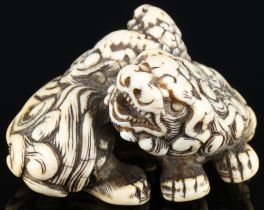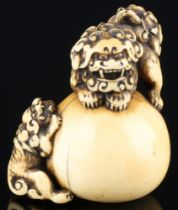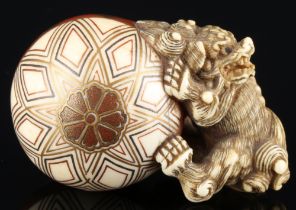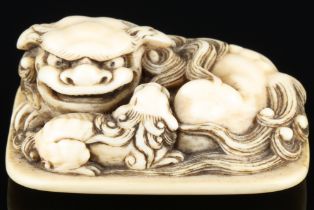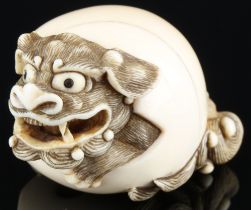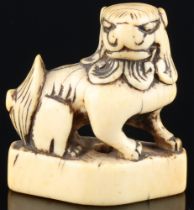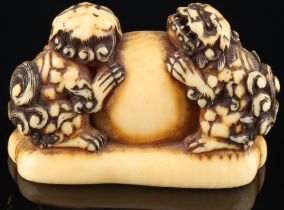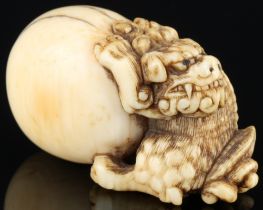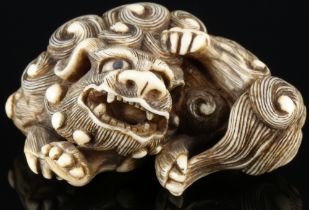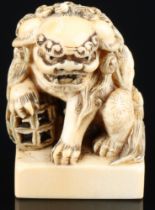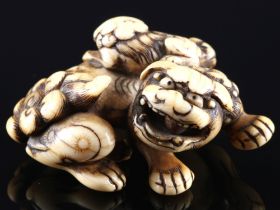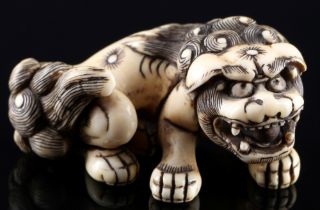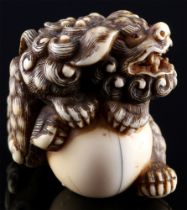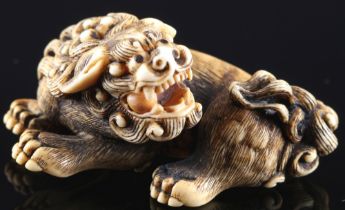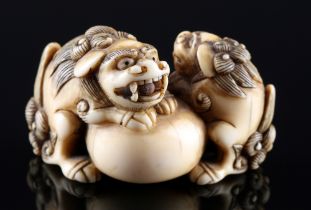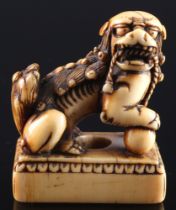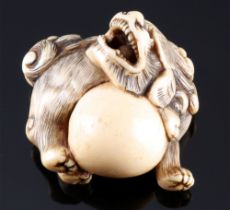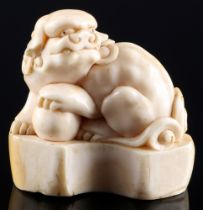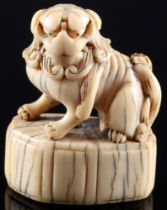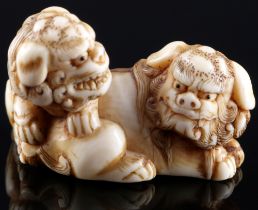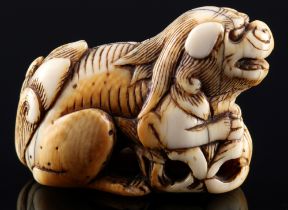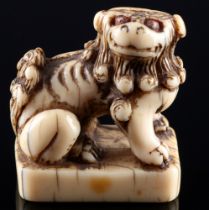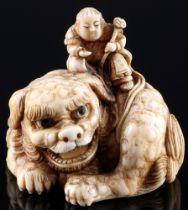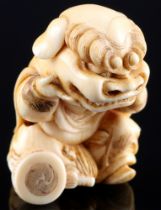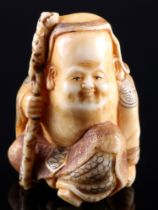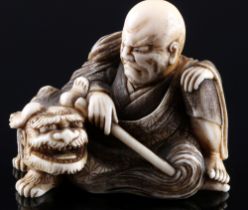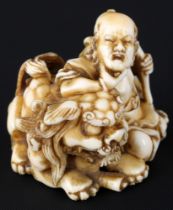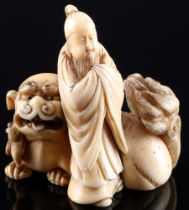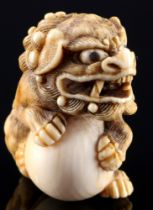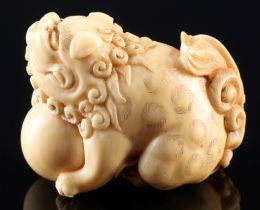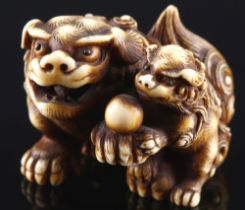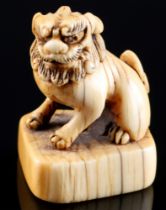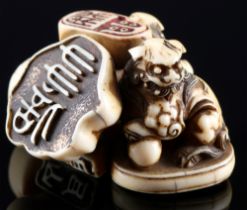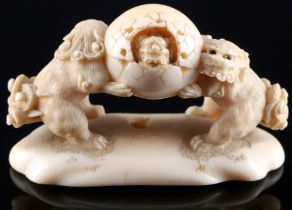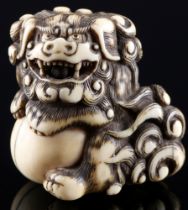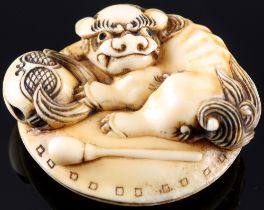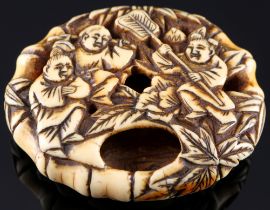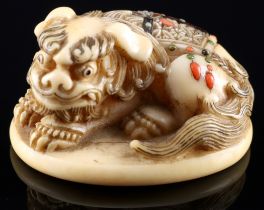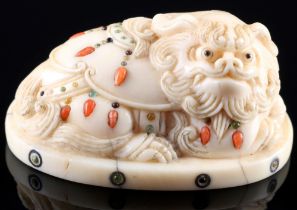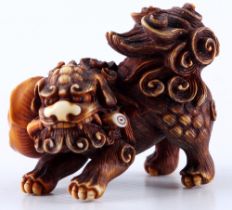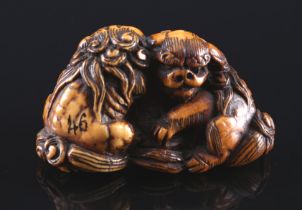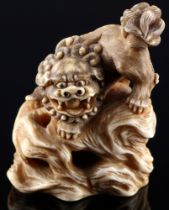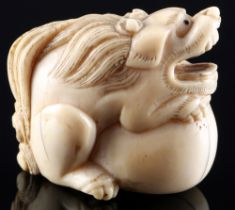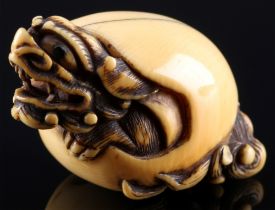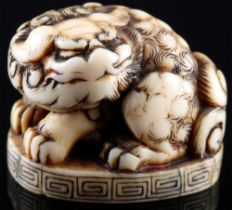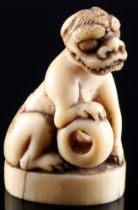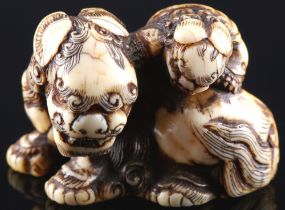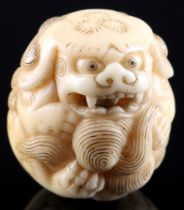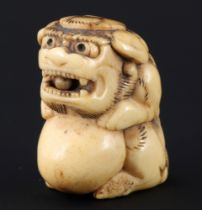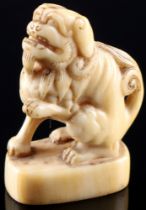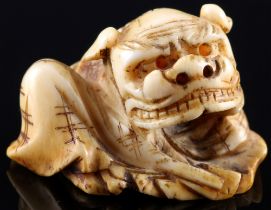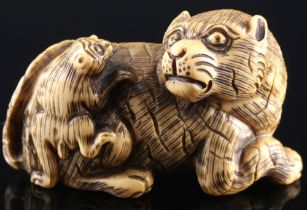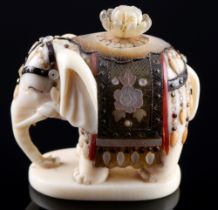Perfeziona la tua ricerca
Sale Section
- Art Nouveau & Art Deco (11)
- Asian Art (25)
- Books & Periodicals (2)
- Carpets & Rugs (3)
- Ceramics (1)
- Chinese Works of Art (104)
- Clocks (15)
- Clocks, Watches & Jewellery (64)
- Coins (14)
- Collectables (4)
- Furniture (29)
- Glassware (44)
- Japanese Works of Art (91)
- Jewellery (29)
- Musical Instruments & Memorabilia (1)
- Oil, Acrylic paintings & Mixed Media (132)
- Porcelain (533)
- Prints (32)
- Religious Items & Folk Art (6)
- Sculpture (37)
- Silver & Silver-plated items (74)
- Vintage Fashion (18)
- Wines & Spirits (6)
Stima
Categoria
- Porcelain (533)
- Oil, Acrylic paintings & Mixed Media (132)
- Chinese Works of Art (105)
- Japanese Works of Art (91)
- Silver & Silver-plated items (74)
- Clocks, watches & jewellery (58)
- Glassware (44)
- Sculpture (37)
- Prints & Multiples (32)
- Furniture (29)
- Jewellery (29)
- Asian art (24)
- Vintage Fashion (18)
- Clocks (16)
- Coins (14)
- Art Nouveau & Art Deco (11)
- Religious Items & Folk Art (6)
- Wines & Spirits (6)
- Watches & Watch accessories (5)
- Collectables (4)
- Carpets & Rugs (3)
- Books, Manuscripts & Periodicals (2)
- Ceramics (1)
- Musical Instruments & Memorabilia (1)
Creator / Brand
- Meissen (320)
- Royal Copenhagen (62)
- Edo (51)
- Edo Period (51)
- Qing (40)
- Meiji (28)
- Rosenthal (24)
- Meiji Period (20)
- KPM (13)
- Georg Jensen (11)
- Lalique (10)
- Salvador Dali (10)
- Harald Nielsen (9)
- St Louis (9)
- Goebel Porzellan (6)
- Kangxi (5)
- Lomonosov (5)
- Sèvres (5)
- Émile Gallé (5)
- Cartier (4)
- Gallé (4)
- Hermes (4)
- Louis Vuitton (4)
- Daum (3)
- Fritz Hansen (3)
- Ming (3)
- Nymphenburg (3)
- Qing Dynasty (3)
- Song (3)
- Tongzhi Porcelain (3)
- Christofle (2)
- Dresden (2)
- Franz Barbarini (2)
- Giovanni Battista Piranesi (2)
- Limoges (2)
- Murano (2)
- Piero Lissoni (2)
- Rolex (2)
- Archimede Seguso (1)
- Arne Jacobsen (1)
- Baccarat (1)
- Bang & Olufsen (1)
- Bing and Gröndahl (1)
- Bonnes Mares (1)
- Breguet (1)
- Breitling (1)
- Bulgari (1)
- Chateau Brane Cantenac (1)
- Chateau Haut Brion (1)
- Chateau La Lagune (1)
- Claire Colinet (1)
- Conrad Felixmüller (1)
- David Teniers (1)
- Derby (1)
- Domaine Georges Roumier (1)
- Dunhill (1)
- Friedensreich Hundertwasser (1)
- Goldscheider (1)
- Gorham (1)
- Günther Uecker (1)
- Han (1)
- Henri Gouges (1)
- Henry Wilkinson & Co (1)
- Hermanus Koekkoek (1)
- Isfahan (1)
- Jacques-Louis David (1)
- Jean Vincenti (1)
- Joseph Beuys (1)
- Longines (1)
- Marc Chagall (1)
- Oskar Kokoschka (1)
- Peter Paul Rubens (1)
- Petrus (1)
- Qingbai Ware (1)
- Sabino (1)
- Seguso (1)
- Showa (1)
- Showa Period (1)
- Sigvard Bernadotte (1)
- Sitzendorf (1)
- Venini (1)
- Vienna (1)
- Zhou (1)
- villeroy (1)
Item Type
- Netsuke (78)
- Vase (60)
- Plate (29)
- Bowl (27)
- Katabori Netsuke (27)
- Cup (26)
- Porcelain (24)
- Cups (23)
- Modern & Impressionist Art (15)
- Pot (15)
- Coffee Service (13)
- Saucer (12)
- Box (11)
- Jug (11)
- Tea Service (11)
- Saucers (10)
- 15th-18th Century Art (9)
- Ring (9)
- 19th-21st Century Art (6)
- Teapot (6)
- Clock (5)
- Ruyi (5)
- Buddha (4)
- Dish (4)
- Bordeaux (3)
- Table (3)
- Coffee Set (2)
- Figure (2)
- Guang (2)
- Platter (2)
- Side Table (2)
- Sugar Bowl (2)
- Tureen (2)
- Anabori Netsuke (1)
- Armchair (1)
- Ashtray (1)
- Audio Equipment (1)
- Beaker (1)
- Cabinet (1)
- Cantenac (1)
- Carafe (1)
- Carriage clock (1)
- Cartel Clock (1)
- Chronograph (1)
- Chronometer (1)
- Coin (1)
- Console (1)
- Desk (1)
- Diamond (1)
- Diamond Ring (1)
- Doucai (1)
- Famille Rose (1)
- Figurine (1)
- Gold Ring (1)
- Gu Vase (1)
- Gueridon (1)
- Haut Medoc (1)
- Inro (1)
- Landscape (1)
- Landscape Painting (1)
- Lantern clock (1)
- Mantel clock (1)
- Margaux (1)
- Musical Instrument (1)
- Nuits Saint Georges (1)
- Oil painting (1)
- Opal (1)
- Pitcher (1)
- Pomerol (1)
- Red Wine (1)
- Sauce Boat (1)
- Sauceboat (1)
- Sculpture (1)
- Sideboard (1)
- Skeleton Clock (1)
- Sofa (1)
- Speaker (1)
- Tumbler (1)
- Wine (1)
- Elenco
- Grid
A subscription to the Price Guide is required to view results for auctions ten days or older. Click here for more information
Japan Edo period 1603 to 1868, ivory, the netsuke represents a shishi with a young one, the little one sits on the back of the big shishi, H 35 mm...
Japan Edo period 1603 to 1868, ivory, the netsuke depicts two shishi playing, a large shishi on the ball, a small shishi on the side trying to als...
Japan Meiji period 1868 to 1912, ivory, the netsuke depicts a shishi playing with a ball. The ball is decorated with fine patterns, painted with l...
Japan Edo period 1603 to 1868, ivory, the netsuke depicts a shishi with a young one, the little one lies on a base plate, protected from its mothe...
Japan, Meiji period 1868 to 1912, ivory, the netsuke represents a shishi caught in a ball, H 28 mm x W 42 mm x D 28 mm, weight 25.43 grams, Proven...
Japan Edo period 1603 to 1868, ivory, the netsuke represents a seated shishi, expressive on a base, H 42 mm x W 39 mm x D 16 mm, weight 19.96 gram...
Japan Edo period 1603 to 1868, ivory, the netsuke represents two playing shishi, both nestled against the ball, on a base plate, H 28 mm x W 44 mm...
Japan Edo period 1603 to 1868, ivory, the netsuke represents a shishi with a ball, looking grim and protecting the ball. The netsuke is signed, it...
Japan Meiji period 1868 to 1912, hippopotamus, the netsuke represents a shishi, lying on its stomach, scratching its left ear, H 22 mm x W 47 mm x...
Japan Edo period 1603 to 1868, ivory, the netsuke represents a shishi, sitting, the right paw placed over a brocade ball. Very expressively crafte...
Japan Edo period 1603 to 1868, ivory, the netsuke represents a shishi with a young one, a shishi lying with the ball in its mouth, the little one ...
Japan Edo period 1603 to 1868, ivory, the netsuke represents a shishi lying with a ball in its mouth. The pupils are inlaid with black horn, H 26 ...
Japan Edo period 1603 to 1868, hippopotamus, the netsuke represents a shishi, sitting with three paws holding a ball. The pupils are inlaid with b...
Japan Edo period 1603 to 1868, ivory, the netsuke depicts a shishi with two boys, a shishi lying with the ball in its mouth, the two little ones p...
Japan Edo period 1603 to 1868, ivory, the netsuke depicts a shishi, standing, in a proud position on a pedestal. Very expressively crafted, H 45 m...
Japan Edo period 1603 to 1868, ivory, the netsuke represents a shishi lying with a ball in its mouth. The pupils are inlaid with black horn, H 24 ...
Japan Edo period 1603 to 1868, ivory, the netsuke depicts two playing shishi, both leaning on a ball. A shishi has a ball in its mouth and its eye...
Japan Edo period 1603 to 1868, ivory, the netsuke represents a shishi sitting on a base with a rope in its mouth. The right paw rests on a small b...
Japan Edo period 1603 to 1868, ivory, the netsuke depicts a playing shishi, leaning protectively over a ball. The Shishi has a ball in its mouth, ...
Japan Edo period 1603 to 1868, ivory, the netsuke represents a shishi, the left paw rests on a small ball, sitting on a base. H 38 mm x W 39 mm x ...
Japan Edo period 1603 to 1868, ivory, the netsuke represents a shishi sitting on a base. Worked very expressively. You can see some dry cracks, H ...
Japan Edo period 1603 to 1868, ivory, the netsuke depicts two shishi playing. Expressively crafted, the eyes are inlaid with black horn, H 25 mm x...
Japan Edo period 1603 to 1868, ivory, the netsuke represents a shishi, both front paws placed on a flower. Expressively crafted, H 30 mm x W 42 mm...
Japan Edo period 1603 to 1868, ivory, the netsuke represents a shishi, sitting on a base, the head turned to the left side. Very expressively craf...
Japan Edo period 1603 to 1868, hippopotamus, the netsuke represents a shishi, with a man sitting on his back. He stretches out his hand like a beg...
Japan 19th/20th Century, ivory Katabori-Netsuke boy with shishi mask, signed, Meiji period,
Japan Meiji period 1868 to 1912, ivory, the netsuke depicts a boy with a shishi mask, expressively crafted, the signature cannot be clearly assign...
Japan Meiji period 1868 to 1912, hippopotamus, the netsuke represents a god of luck, Fukurokuju with stick. Sitting, resting contentedly within hi...
Japan Meiji period 1868 to 1912, hippopotamus, the netsuke represents a man with a shishi, sitting nestled together. The clothing is designed in d...
Japan 19th/20th Century, ivory Katabori-Netsuke man with shishi, Shungetsu, signed, Meiji period,
Japan Meiji period 1868 to 1912, ivory, the netsuke depicts a man with shishi, expressively crafted. The man has a stick in his hand and looks gri...
Japan Meiji period 1868 to 1912, ivory, the netsuke depicts a man with a shishi, expressively crafted. The man has a stick in his hand and looks g...
Japan Meiji period 1868 to 1912, ivory, the netsuke depicts a man with a shishi. The man standing with his back leaning against the shishi. Filigr...
Japan Edo period 1603 to 1868, ivory, the netsuke depicts a playing shishi, leaning protectively over a ball. The Shishi is expressively carved, t...
Japan Edo period 1603 to 1868, ivory, the netsuke represents a shishi, the right paw placed protectively on the ball. Very expressively crafted H ...
Japan Edo period 1603 to 1868, hippopotamus, the netsuke represents a shishi, sitting, scratching his left ear. The characteristic features are th...
Japan Edo period 1603 to 1868, ivory, the netsuke depicts a shishi with a young one, a sitting shishi with a ball in its mouth, a larger one on it...
Japan Edo period 1603 to 1868, ivory, the netsuke represents a shishi, sitting, mouth closed. Very expressively carved, H 36 mm x W 27 mm x D 29 m...
Japan Edo period 1603 to 1868, ivory, the netsuke represents two shishi, in the middle of several seals, H 25 mm x W 36 mm x D 34 mm, weight 18.19...
Japan Meiji period 1868 to 1912, ivory, the netsuke depicts three shishis, two playing with a ball in which a small shishi sits. The eyes are inla...
Japan Edo period 1603 to 1868, ivory, the netsuke depicts a playing shishi, leaning protectively over a ball. The shishi is expressively carved, t...
Japan Meiji period 1868 to 1912, ivory, the netsuke depicts a playing shishi, lying on a plate, with a temple bell and mallet. A brush is carved o...
Japan Edo period 1603 to 1868, ivory, the Ryusa-Manju Netsuke depicts a group of musicians around a shishi on the front. Also on the back are thre...
Japan Edo period 1603 to 1868, hippopotamus, the netsuke represents a standing senin, with a shishi on his shoulder. Very expressively carved, H 8...
Japan Meiji period 1868 to 1912, the netsuke represents a shishi lying on a base plate. A small blanket covers the shishi. This blanket has decora...
Japan Meiji period 1868 to 1912, ivory, the netsuke represents a shishi, lying on a base plate. A small blanket covers the shishi. Small stones ar...
Japan Meiji period 1868 to 1912, hippopotamus, the netsuke represents a shishi, standing with a flower in its mouth, signed Harukazu on the bottom...
Japan Edo period 1603 to 1868, ivory, the netsuke represents two shishis, a shishi guarding a vessel. The netsuke is dark patinated with vegetable...
Japan Meiji period 1868 to 1912, hippopotamus, the netsuke represents a shishi, standing on a rock, with a ball in its mouth, the parallel lines, ...
Japan Edo period 1603 to 1868, ivory, the netsuke depicts a playing shishi, leaning protectively over a ball. The shishi is expressively carved, t...
Japan Edo period 1603 to 1868, ivory, the netsuke represents a playing shishi, stuck in a ball. The Shishi is expressively carved, the eyes are in...
Japan Edo period 1603 to 1868, ivory, the netsuke represents a shishi, sitting crouched, mouth closed. Very expressively carved, H 19 mm x W 25 mm...
Japan Edo period 1603 to 1868, ivory, the netsuke represents a shishi, sitting on a base plate, the right paw placed on a ball. The mouth is close...
Japan Edo period 1603 to 1868, ivory, the netsuke represents a shishi with a young one, a shishi lying down, the little one lies on the back of th...
Japan Meiji period 1868 to 1912, ivory, the netsuke represents a shishi, sitting, huddled into a ball. Very expressively crafted, H 31 mm x W 28 m...
Japan Edo period 1603 to 1868, deer horn, the netsuke represents a shishi, standing, the mouth opened, a movable ball in the mouth, H 34 mm x W 28...
Japan Edo period 1603 to 1868, ivory, the netsuke represents a shishi, lying down, its mouth open. Very expressively carved, H 17 mm x W 46 mm x D...
Japan Edo period 1603 to 1868, ivory, the netsuke represents a shishi, seated, the left paw raised. The netsuke is carved as a seal, with a seal a...
Japan Edo period 1603 to 1868, ivory, the netsuke represents a shishi, lying down, wrapped in a blanket. Very expressively crafted, H 20 mm x W 32...
Japan Meiji period 1868 to 1912, ivory, the netsuke depicts a tiger with cubs, lying down, the cubs climbing up the mother. Very expressively craf...
Japan Edo period 1603 to 1868, ivory, the netsuke represents a shishi, standing upright on a shield, H 41 mm x W 16 mm x D 13 mm, weight 8.49 gram...
Japan Meiji period 1868 to 1912, ivory, the netsuke depicts an elephant, from the Shibayama school. Various materials were used for inlays, e.g. m...

